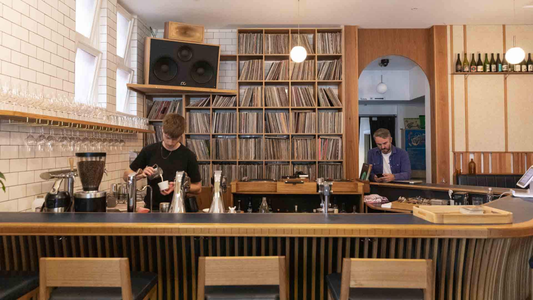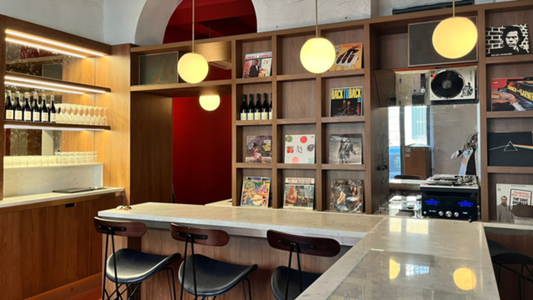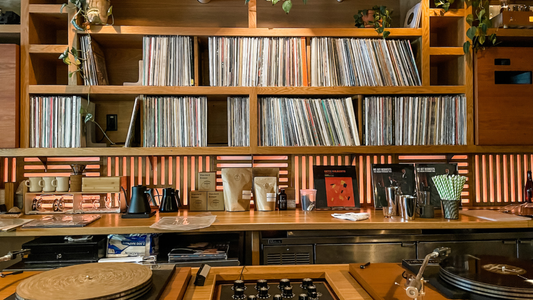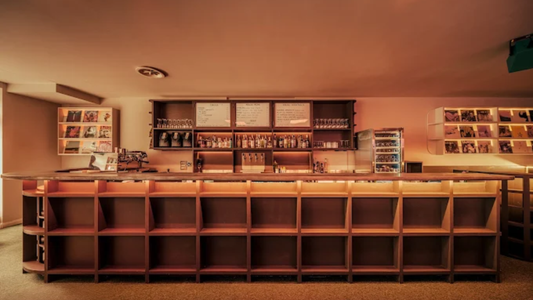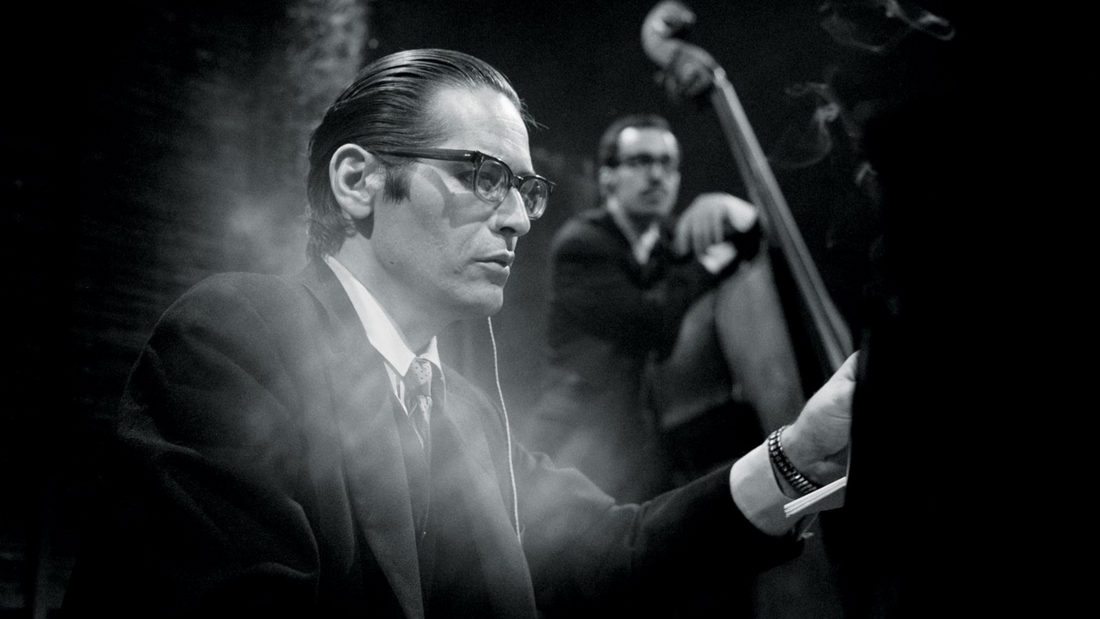
What is Active Listening
By Rafi Mercer
To ask what active listening is, you must begin with its opposite. Most of the time, we listen passively. Sound arrives, we half-hear it, we let it pass through us while our attention scatters elsewhere. Music plays while we talk, or cook, or scroll. Voices wash over us in meetings and conversations, our minds wandering, waiting for gaps rather than meaning. Passive listening is what the modern world has trained us for: efficient, distracted, constant.
Active listening is different. It is the act of giving sound your full attention, not as background but as presence. It is choosing to hear with care. And when you first experience it — whether in a listening bar, a concert hall, or a living room with the lights dimmed and the record spinning — you realise how rare it is, and how transformative.
For me, the essence of active listening lies in silence. Not silence as the absence of sound, but as the frame that allows music to appear. In a bar like JBS Jazz Bar in Shibuya, the silence is almost tangible. The room softens, conversations hush, even the clink of a glass seems muted. When the stylus lowers, the silence shifts into shape: the space between notes becomes alive, the breath of the performer audible, the atmosphere of the recording revealed. Active listening is what happens when you respect that silence enough to hear it.
It is also physical. To listen actively is to feel sound in the body, not just the ear. A bassline resonates in the chest, a cymbal shimmers in the air, a violin cuts through the space and lingers in the skin. Fidelity matters here — the quality of the system, the placement of the speakers, the tuning of the room. But fidelity alone is not enough. Without attention, even the finest system collapses into noise. With attention, even a modest system can carry weight.
Active listening requires presence. To sit through an album from start to finish is to give yourself to time. Forty minutes, perhaps longer, held in one arc. No skipping, no shuffling, no impatience. Just trust in the unfolding of the record. It is astonishing how unusual that feels today. We rarely give anything — a book, a film, a conversation — such unbroken attention. Yet when we do, the reward is depth. You hear not only the music but the intention behind it: the sequencing of tracks, the architecture of dynamics, the narrative the artist built. The album becomes not a collection of songs but a journey.
The Japanese kissaten understood this long before the phrase “active listening” was fashionable. In the cafés of Shinjuku and Shibuya, silence was enforced, records were played in full, fidelity was prized. The room became an education in listening, not through instruction but through atmosphere. You sat, you stayed, you learned to hear. Today’s listening bars inherit that ethic. They are classrooms without teachers, sanctuaries without sermons. They invite you to practise active listening simply by creating the conditions for it.
But active listening extends beyond music. Once you experience it in a listening bar, you begin to notice it elsewhere. In conversation, when you give someone your full attention without planning your reply. In the city, when you hear the rhythm of footsteps, the counterpoint of voices, the architecture of noise. In nature, when you pause long enough to hear the wind in trees, the subtle changes of birdsong. Active listening is not only an act of art, but of life.
Why does it matter? Because listening is how we connect. Passive listening leaves us numb, detached, unanchored. Active listening draws us in, deepens our relationships, restores our attention. In music, it reveals nuance. In life, it reveals meaning. And in a world defined by distraction, the ability to listen actively is a quiet form of resistance.
When I think of active listening, I remember nights when music held me utterly. Bill Evans at the Village Vanguard, the air of the club audible in the silence between chords. Donny Hathaway live, the crowd’s breath as much part of the record as the notes. Or simply a record at home, a whisky poured, the lights dim, the room tuned to nothing else. In those moments, listening was not consumption but devotion. I was not skimming sound, I was living it.
So what is active listening? It is the choice to give sound attention, to treat it as presence rather than background. It is silence held as architecture, fidelity honoured as devotion, presence given as a gift. It is the ethic that defines listening bars worldwide, the practice that makes music matter, the discipline that restores depth in a shallow world.
And once you know it, you cannot return.
Rafi Mercer writes about the spaces where music matters. For more stories from Tracks & Tales, subscribe, or click here to read more.
